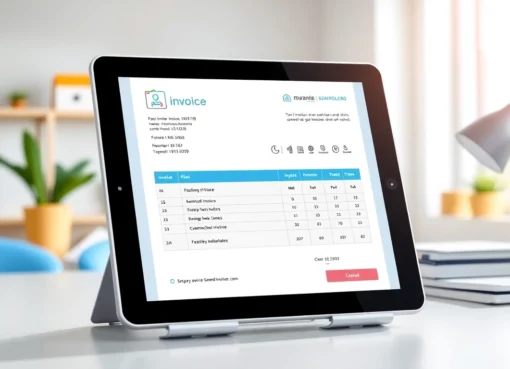5 Proven Strategies to Enhance Your Employee Benefits Plan in Canada

Understanding the Basics of Employee Benefits Plans in Canada
Implementing a comprehensive employee benefits plan is a crucial step for Canadian businesses striving to attract, retain, and motivate talent. A well-structured benefits package not only fulfills legal requirements but also plays a pivotal role in enhancing employee well-being, organizational loyalty, and overall productivity. In Canada, a typical benefits package comprises core health and dental plans, alongside supplementary options designed to support various employee preferences and life stages. However, designing an effective plan involves understanding the fundamental components and legal considerations that govern benefits offerings.
What Constitutes a Comprehensive Benefits Package
A thorough employee benefits package goes beyond basic health coverage to include a range of services tailored to meet employees’ diverse needs. Key elements often include:
- Health and Dental Insurance: Essential for covering medical expenses, prescriptions, dental care, and vision services.
- Disability and Life Insurance: Provides financial protection for employees and their families in case of unforeseen events.
- Retirement Savings Plans: Supports long-term financial security through registered pension plans (RPP) or group Registered Retirement Savings Plans (RRSP).
- Additional Perks: Wellness programs, employee assistance programs (EAPs), hospitality benefits, and more customized offerings based on specific organizational goals.
In assessing these components, organizations should consider future-proofing their plans by including non-traditional benefits that address evolving employee expectations.
Legal Requirements and Compliance in Canadian Benefits Plans
Remaining compliant with federal and provincial legislation is paramount. Employers must adhere to laws such as the Canada Labour Code and provincial employment standards, which specify mandatory benefits like statutory holidays and worker safety provisions. Additionally, there are tax implications to consider—benefits are typically taxable income unless they qualify as non-taxable perks (e.g., health care services or certain wellness allowances).
Legal compliance also involves timely reporting and proper documentation. For example, under the Income Tax Act, employers must issue T4 slips that accurately reflect taxable benefits provided to employees. Ignoring these stipulations can result in penalties, audit risks, and reputational damage. Engaging with experienced advisors helps ensure benefits plans are fully compliant while maximizing tax efficiencies.
Key Factors Influencing Your Employee Benefits Plan Design
Crafting a tailored benefits plan depends on multiple variables:
- Company Size: Smaller businesses may prioritize affordability and flexibility, while larger organizations often seek scalable, comprehensive plans.
- Industry Sector: Healthcare providers, tech firms, or manufacturing companies face different health and safety considerations, influencing plan components.
- Workforce Demographics: Age, geographic location, and cultural diversity affect benefit preferences and needs.
- Budget Constraints: Cost management is vital; innovative benefit solutions should balance competitiveness with financial sustainability.
- Organizational Culture: Benefits should reinforce your company’s values—be it wellness focus, work-life balance, or employee empowerment.
Strategic planning involves data-driven evaluations, including benchmarking against industry standards and gathering employee feedback to refine offerings accordingly.
Identifying Hidden Opportunities in Your Benefits Plan
Mapping Out Non-Traditional Benefits That Employees Value
Innovative benefits can significantly boost engagement. Examples include flexible work arrangements, mental health support, and experiential perks like wellness retreats or educational subsidies. These non-traditional benefits often go unnoticed but are increasingly important to competitive talent pools.
Moreover, offerings such as startup benefits—like remote work stipends, pet insurance, or subsidies for childcare—resonate with today’s workforce. These perks not only improve morale but also differentiate your organization in a tight labor market.
Analyzing Cost-Benefit for Innovative Benefit Options
Introducing new benefits requires careful financial evaluation. Cost-benefit analysis helps determine the return on investment (ROI) by measuring factors such as improved retention rates, reduced absenteeism, and enhanced employee satisfaction.
For example, offering mental health services or flexible hours may have upfront costs but lead to significant savings through increased productivity and decreased healthcare claims. Employing analytics tools can facilitate data-driven decisions, ensuring benefits investments align with organizational goals.
Implementing Data-Driven Improvements for Better Engagement
Regularly collecting and analyzing employee feedback—via surveys, focus groups, or engagement platforms—can uncover unmet needs or overlooked benefits. This proactive approach fosters continuous improvement, customizing benefits to align with evolving workforce expectations.
Advanced HR analytics enable real-time monitoring of benefits utilization, helping identify underused services and areas for enhancement. Over time, such insights drive strategic adjustments that bolster overall satisfaction and organizational performance.
Tailoring Employee Benefits Plans to Your Business Needs
Customizing Plans Based on Company Size and Industry
Flexibility is key. Small startups might prioritize affordability and quick onboarding, while large corporations may develop multi-tiered plans offering extensive options. Industry-specific needs also influence coverage—construction firms might emphasize safety and accident insurance, while tech companies may focus on mental health and remote working benefits.
Aligning Benefits with Workforce Demographics and Preferences
Understanding your employees’ demographics enables targeted offerings. For example, younger employees may value student loan assistance or tuition reimbursement, while older staff could prioritize estate planning or elder care resources.
Conducting demographic analysis combined with direct surveys ensures benefits align with actual needs, enhancing utilization and satisfaction.
Integrating Flexible and Modular Benefit Components
Adopting a modular approach allows employees to select benefits that suit their personal circumstances, fostering inclusivity. Platforms enabling benefit customization—such as spending accounts or cafeteria-style plans—empower employees and improve perceived value.
This flexibility not only increases engagement but also allows your organization to adapt swiftly to changes in workforce composition or business priorities.
Best Practices for Communicating and Managing Benefits
Effective Communication Strategies for Employee Engagement
Clear, consistent messaging maximizes benefit utilization. Utilizing digital platforms, informational sessions, and personalized communications helps demystify plan details. Transparency about benefit options, eligibility, and claim processes builds trust.
Streamlining Benefits Enrollment and Utilization
Automated, user-friendly enrollment systems reduce administrative burdens and improve experience. Providing ongoing support via dedicated benefits coordinators or help desks encourages employees to fully leverage their plans.
Monitoring and Adjusting Benefits Programs for Ongoing Success
Regular review cycles—augmented by data analytics—ensure benefits remain aligned with organizational and employee needs. Incorporating feedback and tracking key metrics enables continuous refinement, keeping your benefits competitive and relevant.
Measuring the Impact of Your Benefits Plan
Key Metrics for Evaluating Employee Satisfaction and Retention
Tracking turnover rates, absenteeism, and engagement scores provides insights into benefits effectiveness. High satisfaction often correlates with increased loyalty, reduced recruitment costs, and improved organizational culture.
Utilizing Employee Feedback for Continuous Improvement
Soliciting regular feedback through surveys or suggestion channels uncovers unmet needs and reveals satisfaction drivers. Acting on this data fosters a culture of responsiveness and demonstrates your commitment to employee well-being.
Linking Benefits Investment to Organizational Performance
Quantifying the ROI of benefits investments through productivity gains, reduced healthcare costs, and talent retention solidifies strategic decision-making. Leveraging this data supports budget justification and further benefits enhancements.


